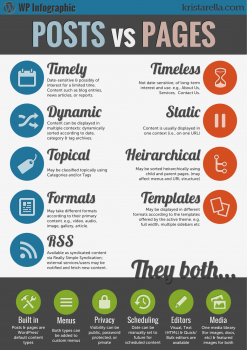In the context of website design and content management, a fundamental distinction exists between two types of content: posts and pages. While each plays a unique role in online communication, they are fundamentally different in terms of their structure, intended audience, and purpose.
Posts, for instance, are an archetypal form of time-sensitive content, typically consisting of articles or entries arranged in reverse chronological order and categorized by means of tags or categories. Such content is well-suited for sharing time-sensitive information, ranging from news to opinions, events, and more. As a mainstay of the blog section of a website, posts may include a variety of media, such as text, images, and videos, and are accompanied by the ability of readers to engage with the content through commenting.
Pages, in contrast, represent a more stable and unchanging form of content, typically intended to provide information of a more static and enduring nature, such as “About Us,” “Contact Us,” or “Services.” They are linked in a website’s navigation menu, often through a hierarchical structure, and are not classified by categories or tags. While they too can include various media, such as text, images, and videos, they typically do not allow for reader engagement in the form of comments.
In essence, posts are designed for publishing frequently updated content, while pages are suited to providing more lasting, static content. An appreciation of the differences between the two types of content is therefore critical to the effective management and design of a website that engages and informs its target audience.


